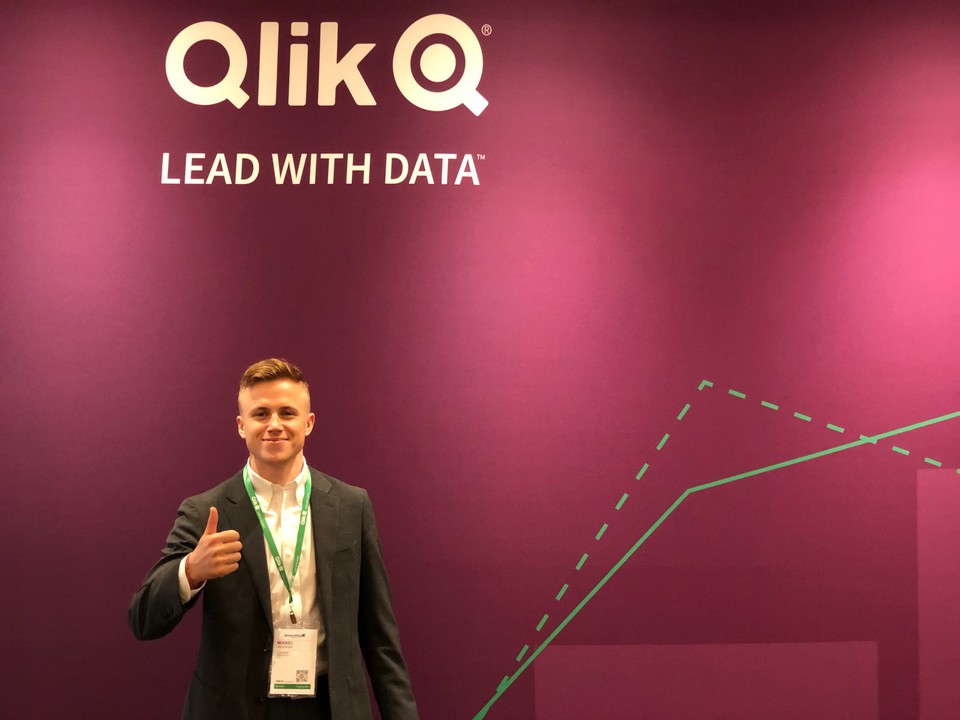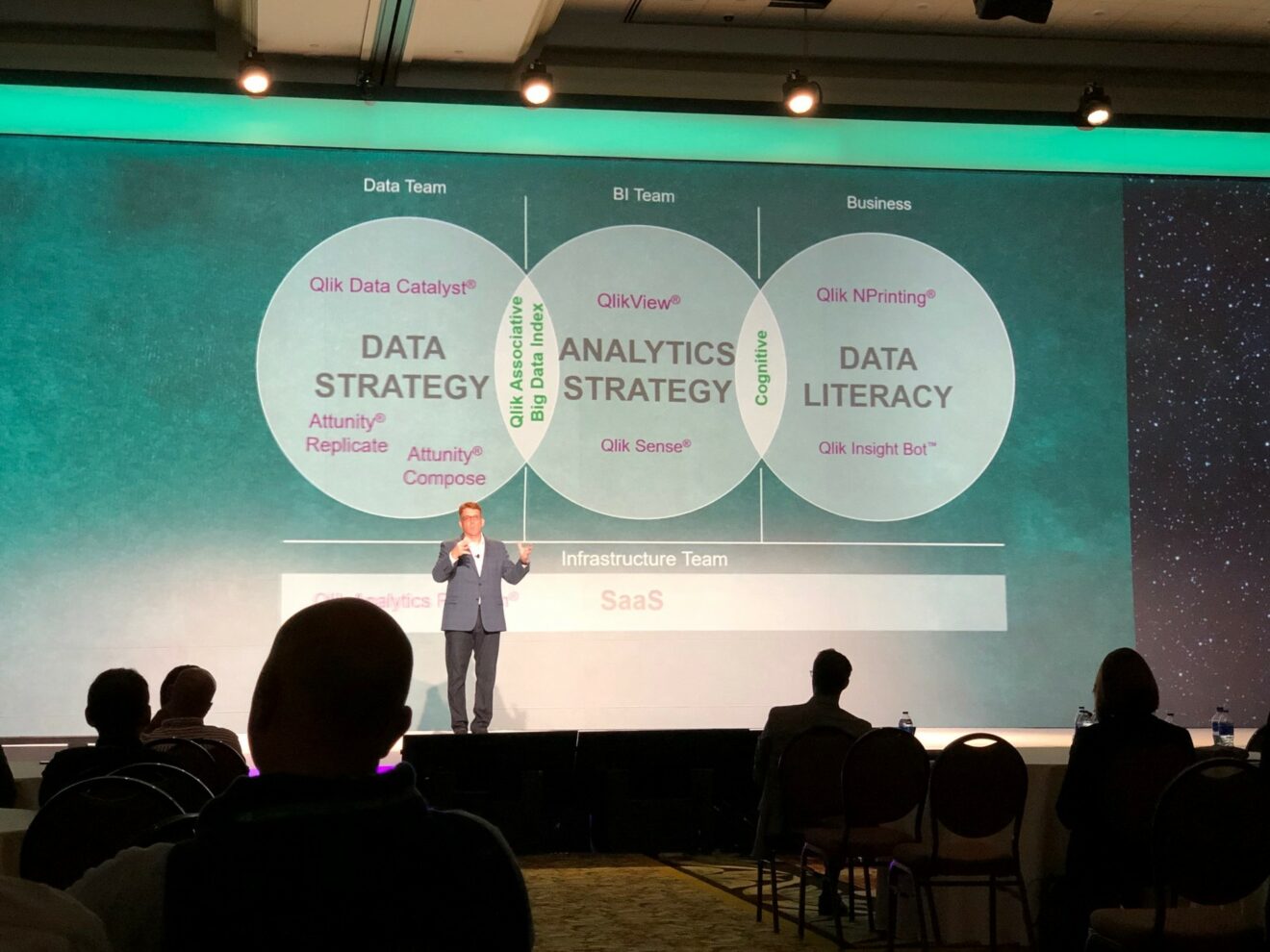Artificial intelligence, big data indexing and kubernetes (/k(j)uːbəˈnɛtɪs/).
The buzzwords were many at the Qlik Qonnections 2019 conference, which is Qlik’s yearly gathering of data enthusiasts. The conference is 4 days packed with talks, workshops and hands-on exercises all evolving around the Qlik ecosystem.
At Intellishore, we’re engaging with multiple technologies and tools, but we do have a partner status with Qlik. If you don’t have that status, here’s my condensed take on what’s hot at Qlik.
Interesting news are coming out of Qlik
Interesting news are coming out of Qlik
3 very interesting trends caught my attention at this years conference:
01 Qlik is sharpening their value proposition when it comes to upstream integration in the data supply chain
02 Qlik is expanding their product range to better enable advanced analytics (together with the rest of the industry, I might add)
03 Qlik Sense is going to improve greatly if you’re in the cloud
Read more about the three trends below.

1. Qlik and the data supply chain
Qlik’s recent acquisition of Attunity (it happened a couple of weeks ago) is something that excites me a lot. Attunity is solving what I would call “the middle layer problem”. Many companies have lots of data available, are committed to leveraging it, but their data is rarely analytics friendly or even ready. That’s the argument for creating a middle layer where data is extracted, transformed and made available for analytics tools. There’s more to it than that, but structuring data up-front saves time when users are to leverage it in analytics solutions later.
Attunity is committed to automating that process by providing fast data integration working in real time. It will also work with multiple analytics tools on top. For instance other BI tools than Qlik Sense… That’s good news for companies wanting to optimize their analytics foundations’ regardless of whichever front-end tool they’re utilizing. And it excites me because getting the data foundation right is often a larger challenge than choosing the right visualization colors.
2. Advanced analytics capabilities from Qlik
If you’re a nerd, wild stuff went down at Qonnections. For instance, a data model with 63 billion rows was queried in a couple of seconds leveraging Qlik’s associative big data index (ABDI). On top of this, Qlik’s cognitive engine was engaging with a user who made selections in the data model through a regular conversation. The user received both conversational and graphical response in a couple of seconds.
These are some of the technologies that are still under development. However, they’re also a part of Qlik’s roadmap, which is really interesting!

In general, democratization is a key theme when it comes to analytics. Qlik is driving a narrative evolving around having analytics embedded and augmented in every corner of the business. Personally, I think all the available extensions are greatly contributing to that vision. Tools such as Data Robot (making machine learning in Qlik accesible), Qlik Insight Bot (enabling conversational analytics) and Narrative Science (automated reports in natural language) are relatively easy to use with powerful use cases.
Less advanced tools are already democratizing. This is, for instance, the increased Insight Advisor capabilities in Qlik Sense. In the April release, you can actually start asking Qlik to get you insights at a quality that (occasionally) exceeds your own competences. It’ll also create explanatory visualizations for you.
3. Qlik Sense in the cloud
Collaboration around app building in Qlik Sense has always been a bit of a pain. You have had to go back and forth between the hub and the QMC, while versioning hasn’t been easily maintained.
That’s about to change. Qlik is adding a complete SaaS deployment option, where the traditional hub experience is going to be greatly revised. Key features include:
- The ability to create groups and work on the same apps in those groups
- Adjusting access levels in the groups so the members can have differentiated read / write capabilities
- Reload and reload scheduling directly from the hub
This means that users will be able to operate more Qlik features outside of the QMC and load scripts. It’s unclear how much of the revised hub that will be available for other deployment models than cloud-only. I certainly hope that it’s coming to a hub near you!
